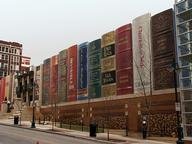Quiz Answer Key and Fun Facts
1. What is the name of Molesworth's curly-haired best friend and partner in crime?
2. Grabber is the school Head Boy and captain of all sports teams. Of which prize is he a regular winner?
3. Phineas Grimes is the headmaster of St Custard's, but what subject does the mad Sigismund Arbuthnot teach?
4. Who is the ridiculously perky character who regularly greets people with 'hullo clouds, hullo sky'?
5. Molesworth often daydreams in class about being a Dan Dare-esque space hero, Captain Molesworth. Who is Captain Molesworth's arch nemesis (and a parody of the Mekon)?
6. Which piece does Molesworth 2 often play (very, very badly) on the school piano?
7. Which invention, for which Molesworth is used as a test subject, appears in the story 'I Am Going to Be Good'?
8. What is the Latin motto of St Custard's? (Hint: the school dog might know.)
9. What is the most notable aspect of the style in which the books are written?
10. Which of these books is NOT an actual 'Molesworth' book title?
Source: Author
Kankurette
This quiz was reviewed by FunTrivia editor
looney_tunes before going online.
Any errors found in FunTrivia content are routinely corrected through our feedback system.
